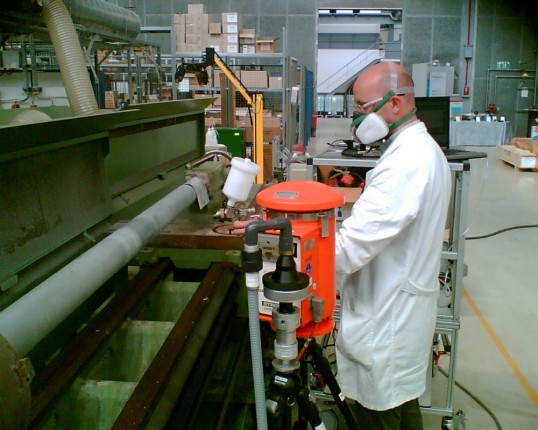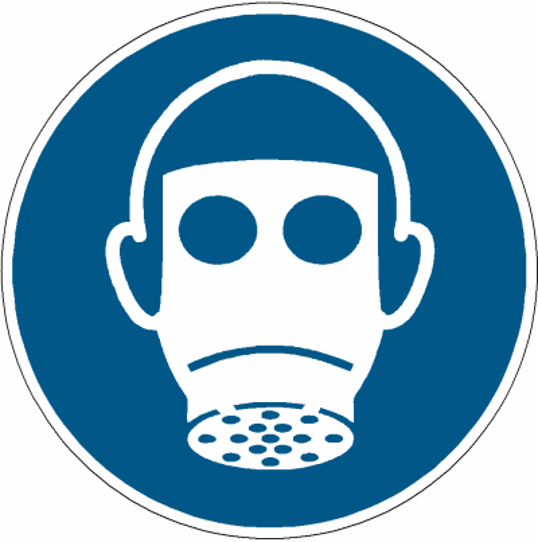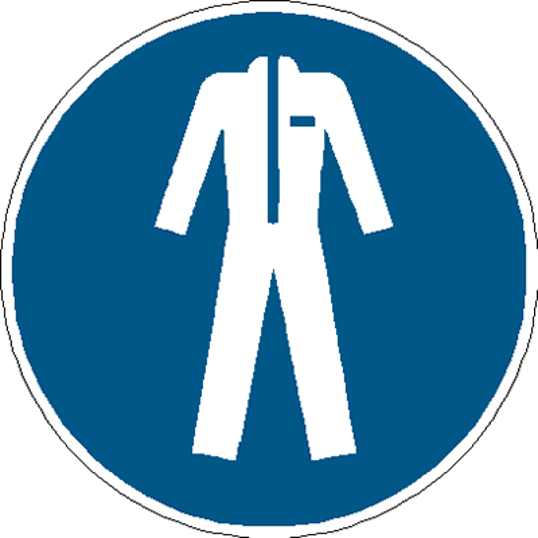- Artificial Intelligence (AI)
- Occupational exposure limit values
- Climate Change and Occupational Safety
- List of CMR substances
- Electromagnetic fields
- Ergonomics
- Industrial Security
- Collaborative robots
- Noise
- Nanoparticles at the workplace
- Optical Radiation
- REACH
- Reference materials
- Proficiency testing
- Vibration
- Virtual reality
- Work 4.0
Protective measures against ultrafine aerosols and nanoparticles at the workplace

Measurement of the particle number concentration during the use of nanomaterials
Source: IFA
Conclusion:
The studies conducted to date show that the protective measures commonly taken against dusts are also effective against ultrafine particles and nanoparticles. In the context of risk assessment and the specification of protective measures, the priority of measures as set out in Section 9 of the German regulation on hazardous substances (Gefahrstoffverordnung) must be observed. In particular, Annex III No. 2 concerning particulate hazardous substances, Section 2.3 must be implemented in conjunction with technical rule TRGS 500 Sections 5.2.2 and 6.2.3. Assessment criteria are proposed for evaluation of the effectiveness of the measures. All other obligations under the Gefahrstoffverordnung, such as those concerning the instruction of employees or occupational medical check-ups, are not affected by the fact that a substance is present in nanoparticulate form, but should be observed as normal.
Engineered protective measures
Owing to nanoparticles' new and in some cases surprising properties, it is frequently assumed that the usual OSH protective measures would not be effective against nanoparticles and ultrafine particles. Where filtration measures (such as breathing masks or air collection installations) are used, the image of a sieve is frequently cited through the large holes of which the small particles would slip. This assumption is not consistent with physical principles, however: particles larger than 300 nm are most effectively separated by impaction on the filter material, entrapment by the filter material, or sedimentation owing to gravity. For particles smaller than 300 nm, separation by diffusion (Brownian movement) and electrostatic forces becomes increasing relevant with decreasing size [1]. It can therefore be asserted as a rule that technical measures which are effective against dusts in general are also suitable for the elimination of nanoparticles and ultrafine particles [2].
Results of measurements concerning the effectiveness of filters
In the course of workplace measurements involving possible exposure to multiwalled carbon nanotubes, i.e. nanomaterials containing carbon, Han et al. and Yeganeh et al. reported in 2008 that conventional engineered protective measures appeared to be effective [3; 4].
Information on protective measures
An illustrative description of safe processes and of the protective measures employed in them for the handling of nanoparticles can be found in the brochure entitled "First Results for Safe Procedures for Handling Nanomaterials" [5]. It contains the results of the Nanosafe-2 project funded by the European Union.
During tasks involving dusts, Annex III (2) of the Gefahrstoffverordnung must be observed:
- Installations, machinery and equipment emitting dust must be equipped with effective dust collection facilities, or other measures must be taken to prevent the release of dust.
- The dust must be prevented from spreading to unaffected working areas.
- Dust must be collected if possible in full at the point of emission or creation and disposed of safely; exhausted air must be routed such that as little dust as possible enters the breathing air of employees; the exhausted air may be returned to the working area only once it has been adequately purified.
- The settling of dust deposits must be prevented. If this is not possible, dust deposits should be removed by means of damp or wet methods or by suitable vacuum cleaners or dedusting devices; dry sweeping or the use of compressed air to blow dust deposits away is not permissible.
Organizational protective measures
Tasks involving dusts are subject to the following rules in accordance with Annex III (2) of the Gefahrstoffverordnung:
- Consideration must be given to the dust-raising behaviour.
- Machinery and equipment must be selected and operated in such a way that as little dust as possible is released.
- During commissioning of equipment for the filtration, collection and precipitation of dusts, its adequate effectiveness must be demonstrated.
- The equipment must be inspected for its serviceability, maintained, and if necessary repaired at least once each year; the inspections must be documented.
Dust-intensive tasks are subject to the following rules in accordance with Annex III (2) of the Gefahrstoffverordnung:
- Exposure must be kept as brief as possible.
- The employees must wear the protective clothing provided.
- Washrooms and separate storage facilities for work and normal clothing must be provided.
For tasks involving particulate nanomaterials, additional protective measures are compulsory:
- Checks must be performed of whether particulate nanomaterials can be bound in liquid or solid media (dispersions, pastes, compounds).
- The scope must be explored for performing processes in enclosed apparatus.
- The employees must be instructed concerning the particular physical and chemical properties of nanomaterials and provided with up-to-date information concerning the associated health risks.
- The number of employees at risk of exposure must be limited.
- The hazard areas must be demarcated. Access must be prohibited for unauthorized persons.

Mandatory sign: respiratory protection
Personal protective measures
Insights into the effectiveness of conventional personal protective measures have already been provided by the measurements conducted by the IFA (formerly BGIA) in 2001 [6] regarding the penetration of certain respiratory filter masks by sodium chloride particles (< 100 nm). Typical Class P2 and P3 glassfibre filters exhibited a permeability of only 0.2% and 0.01% respectively for the particle count.
Rengasamy et al. [7] used silver nanoparticles (4 to 30 nm) and sodium chloride particles (20 to 400 nm) in order to test NIOSH-tested (N95, P100) and CE-compliant (FFP2, FFP3) respiratory filter masks. The filter materials employed complied with the requirements stated in the standards. The Nanosafe 2 project confirmed the effectiveness of breathing masks, disposable protective overalls and gloves against graphite nanoparticles (20 to 100 nm) [8].
It is recommended that personal respiratory protection (e.g. filter class P3 or P2 respiratory protection) be worn when engineered measures (see above) are unable to prevent release of the nanoparticles. The result of the risk assessment is to be considered during selection of the personal respiratory protective device. If breathing masks are worn, they must seat tight against the face. The applicable restrictions upon wearing time and provisions governing occupational medical check-ups must be observed when respiratory protection is worn. Instruction and training of the workers is of crucial importance.

Mandatory sign: protective overall
Attention must be paid to the adequate mechanical stability of gloves and to damage to the glove material in order to prevent skin contact. The overlap of the gloves with other protective clothing and the correct way in which they are put on and removed are more important for the avoidance of possible skin contact than the permeation properties of the material. Woven protective clothing materials offer poorer protection than membrane materials. Additional protection against chemicals may be necessary under certain circumstances.
As for other substances, the physical and chemical properties of nanomaterials must be considered separately in the risk assessment (Section 6.1.1 of the German ordinance on hazardous substances, GefStoffV), and particular protective measures taken if necessary. On a case-by-case basis, this may include changes in explosion properties, or the effect of increased conductivity of nanomaterials upon electrical equipment.
DGUV Information
Beschichtungsstoffe mit Nanopartikeln - Gefährdungen bei der Verarbeitung (PDF, 196 KB) (FB HM-071; in German only)
Further information

[1] Hinds, W.: Aerosol technology: Properties and behavior and measurement of airborne particles. 2nd edition. New York, NY: Wiley-Interscience, 1999
[3] Han, J. H. et al.: Monitoring multiwalled carbon nanotube exposure in carbon nanotube research facility. Inhal. Toxicol. 20 (2008), pp. 741-749
[4] Yeganeh, B. et al.: Characterization of airborne particles during production of carbonaceous nanomaterials. Environ. Sci. Technol. 42 (2008), pp. 4600-4606
[5] Project Nanosafe 2, Dissemination Report No. 6 (PDF, 401 KB)
[6] Riediger, G; Möhlmann, C.: Ultrafeine Aerosole an Arbeitsplätzen - Konventionen und Beispiele aus der Praxis (PDF, 316 kB, non-accessible) . Gefahrstoffe - Reinhalt. Luft 61 (2001) No. 10, pp. 429-434
[7] Rengasamy, S.; Eimer, B.C.; Shaffer, R.E.: Comparison of nanoparticle filtration performance of NIOSH-approved and CE-marked particulate filtering facepiece respirators. Ann. Occup. Hyg. 53 (2009) No. 2, pp. 117-128
[8] Nanosafe 2, Dissemination Report No. 1 (PDF, 511 KB): Are conventional protective devices such as fibrous filter media, cartridge for respirators, protective clothing and gloves also efficient for nanoaerosols?
Contact
Hazardous substances: handling, protective measures
Tel: +49 30 13001-3313Fax: +49 30 13001-38001